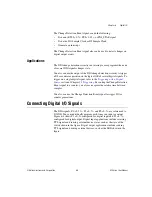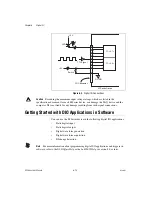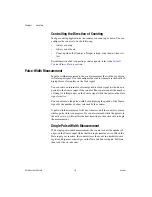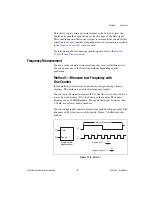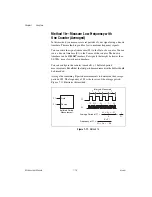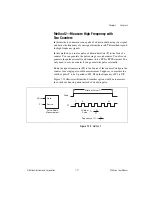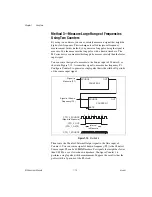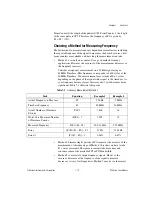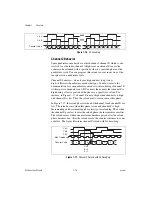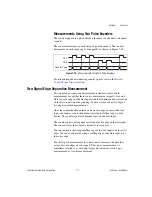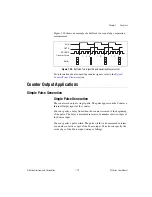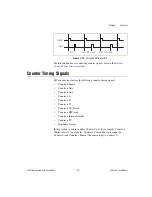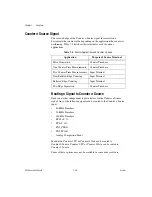
Chapter 7
Counters
©
National Instruments Corporation
7-13
From Counter 0, the length of the pulse is
N
/F1. From Counter 1, the length
of the same pulse is J/F2. Therefore, the frequency of F1 is given by
F1 = F2 * (
N
/J).
Choosing a Method for Measuring Frequency
The best method to measure frequency depends on several factors including
the expected frequency of the signal to measures, the desired accuracy, how
many counters are available, and how long the measurement can take.
•
Method 1 uses only one counter. It is a good method for many
applications. However, the accuracy of the measurement decreases as
the frequency increases.
Consider a frequency measurement on a 50 kHz signal using an
80 MHz Timebase. This frequency corresponds to 1600 cycles of the
80 MHz Timebase. Your measurement may return 1600 ± 1 cycles
depending on the phase of the signal with respect to the timebase. As
your frequency becomes larger, this error of ±1 cycle becomes more
significant; Table 7-1 illustrates this point.
•
Method 1b (measuring K periods of F1) improves the accuracy of the
measurement. A disadvantage of Method 1b is that you have to take
K + 1 measurements. These measurements take more time and
consume some of the available PCI or PXI bandwidth.
•
Method 2 is accurate for high frequency signals. However, the
accuracy decreases as the frequency of the signal to measure
decreases. At very low frequencies, Method 2 may be too inaccurate
Table 7-1.
Frequency Measurement Method 1
Task
Equation
Example 1
Example 2
Actual Frequency to Measure
F1
50 kHz
5 MHz
Timebase Frequency
Ft
80 MHz
80 MHz
Actual Number of Timebase
Periods
Ft/F1
1600
16
Worst Case Measured Number
of Timebase Periods
(Ft/F1) – 1
1599
15
Measured Frequency
Ft F1/(Ft – F1)
50.031 kHz
5.33 MHz
Error
[Ft F1/(Ft – F1)] – F1
31 Hz
333 kHz
Error %
[Ft/(Ft – F1)] – 1
0.06%
6.67%

